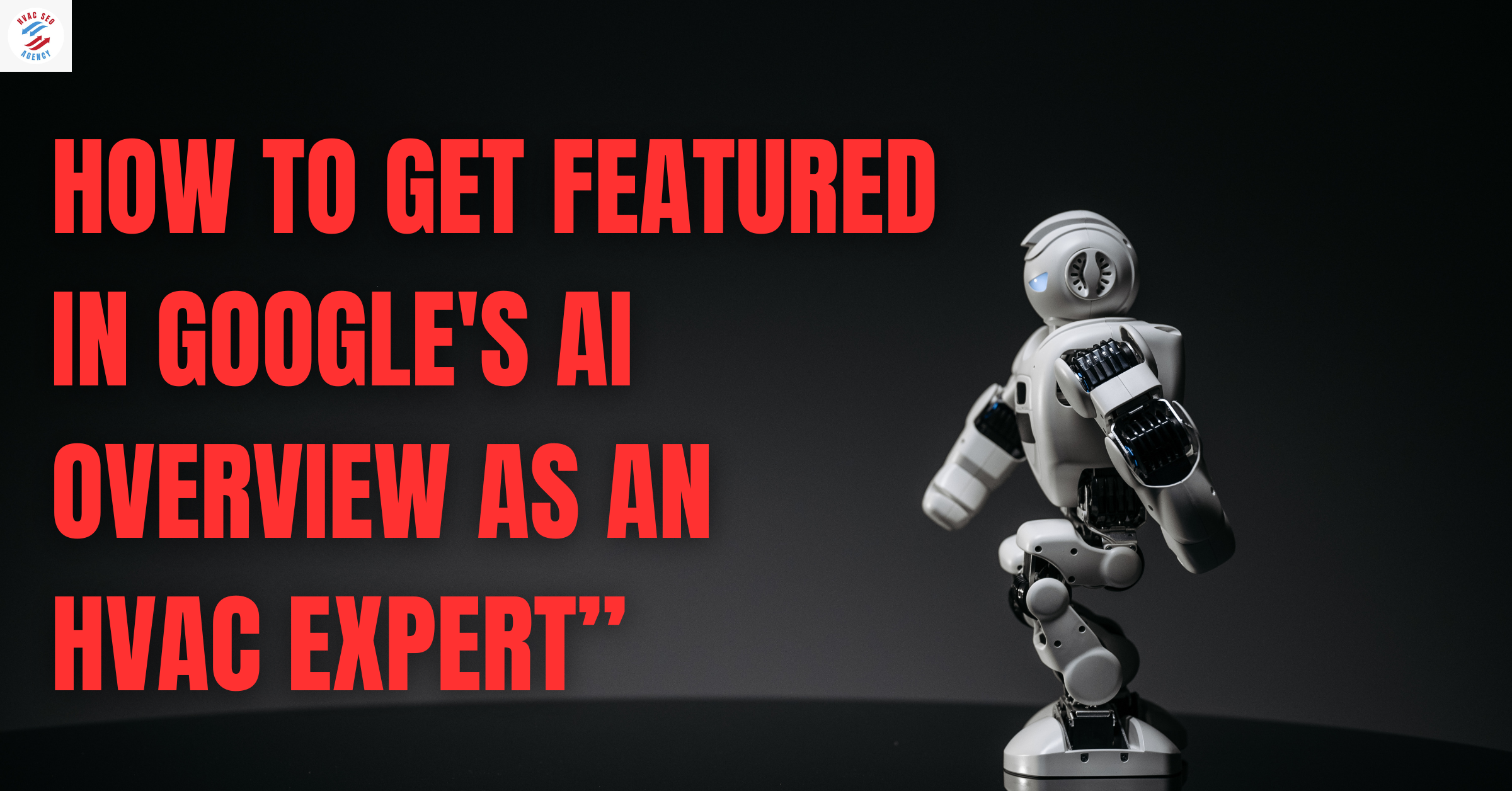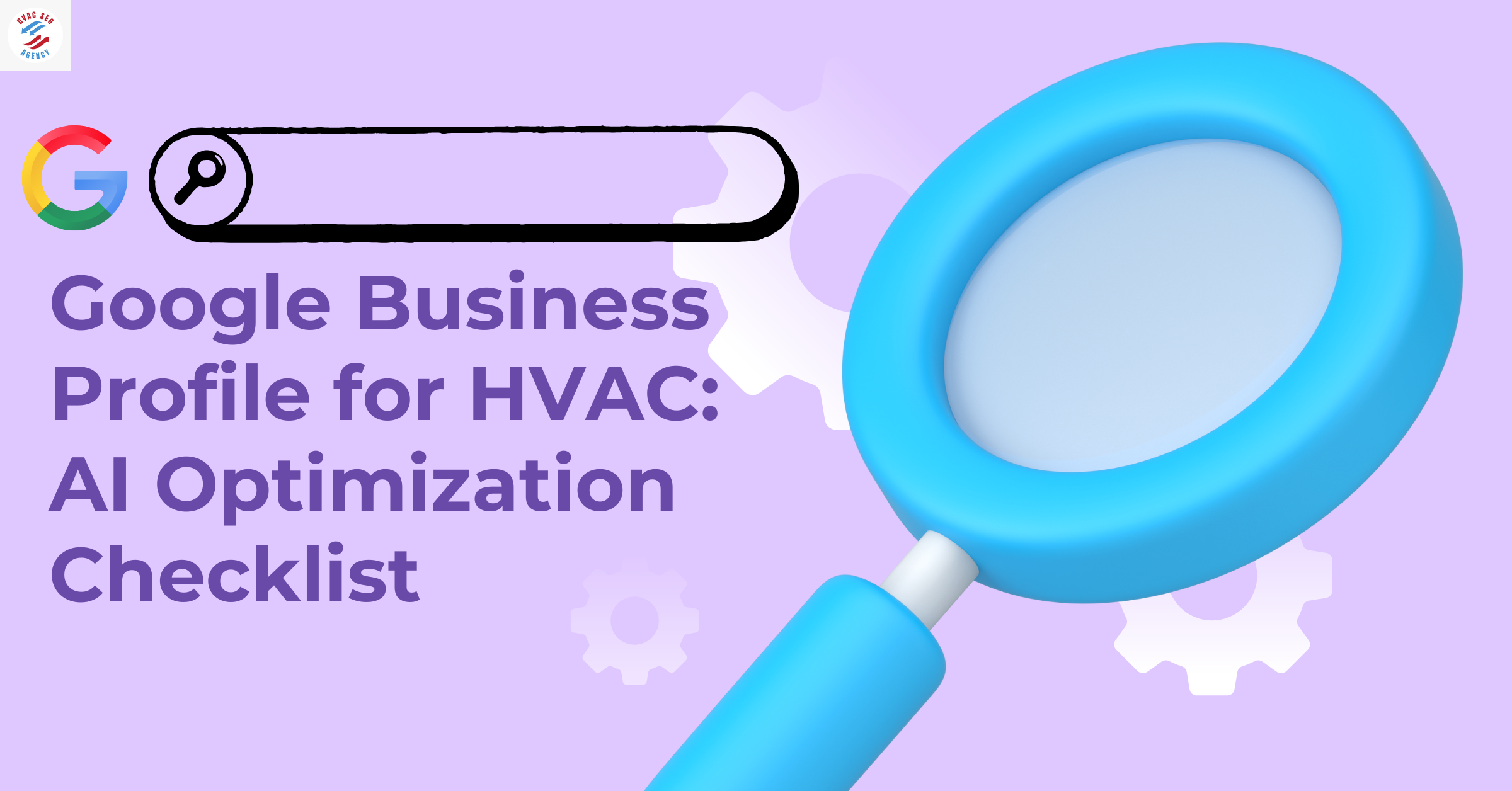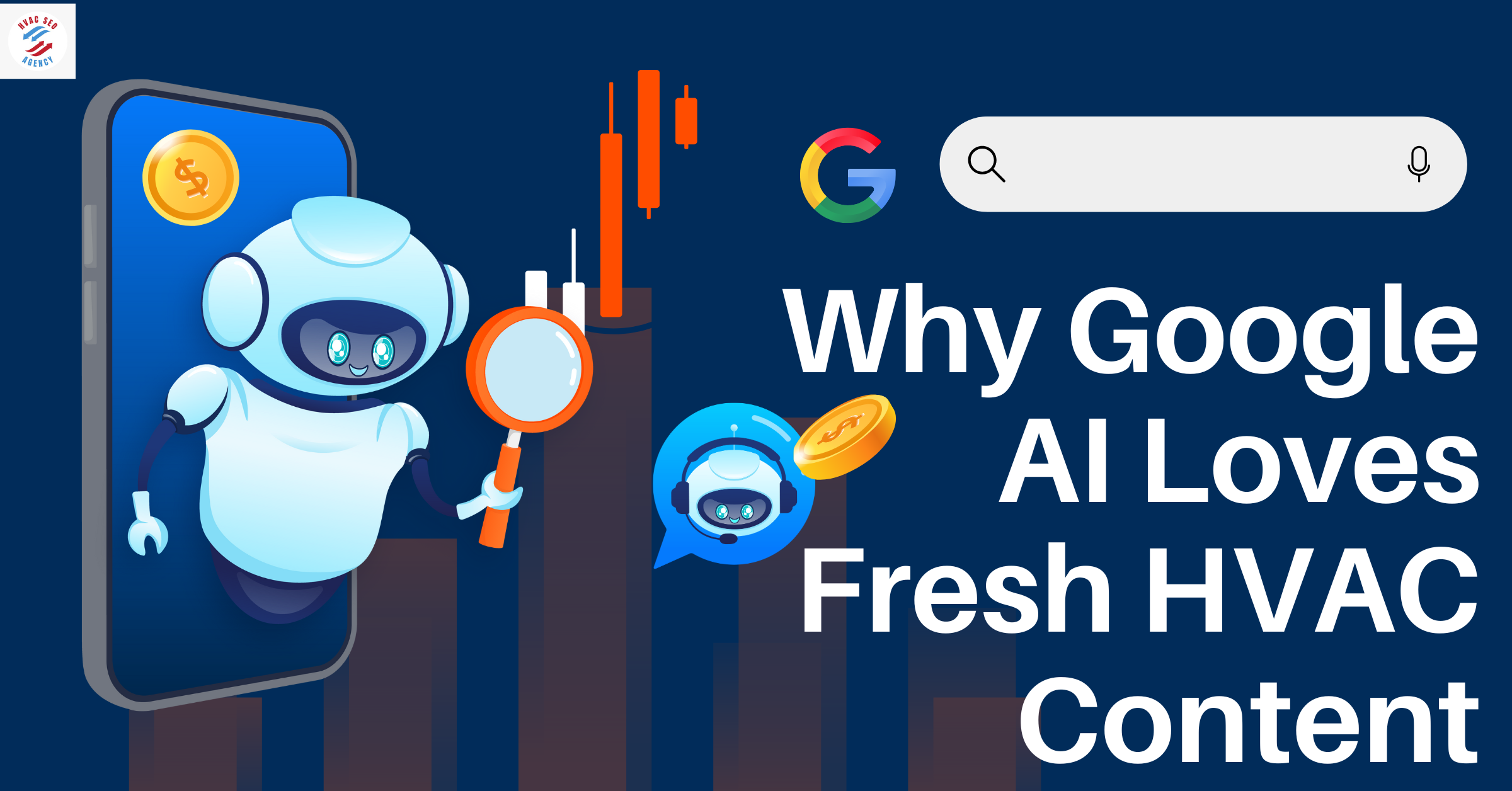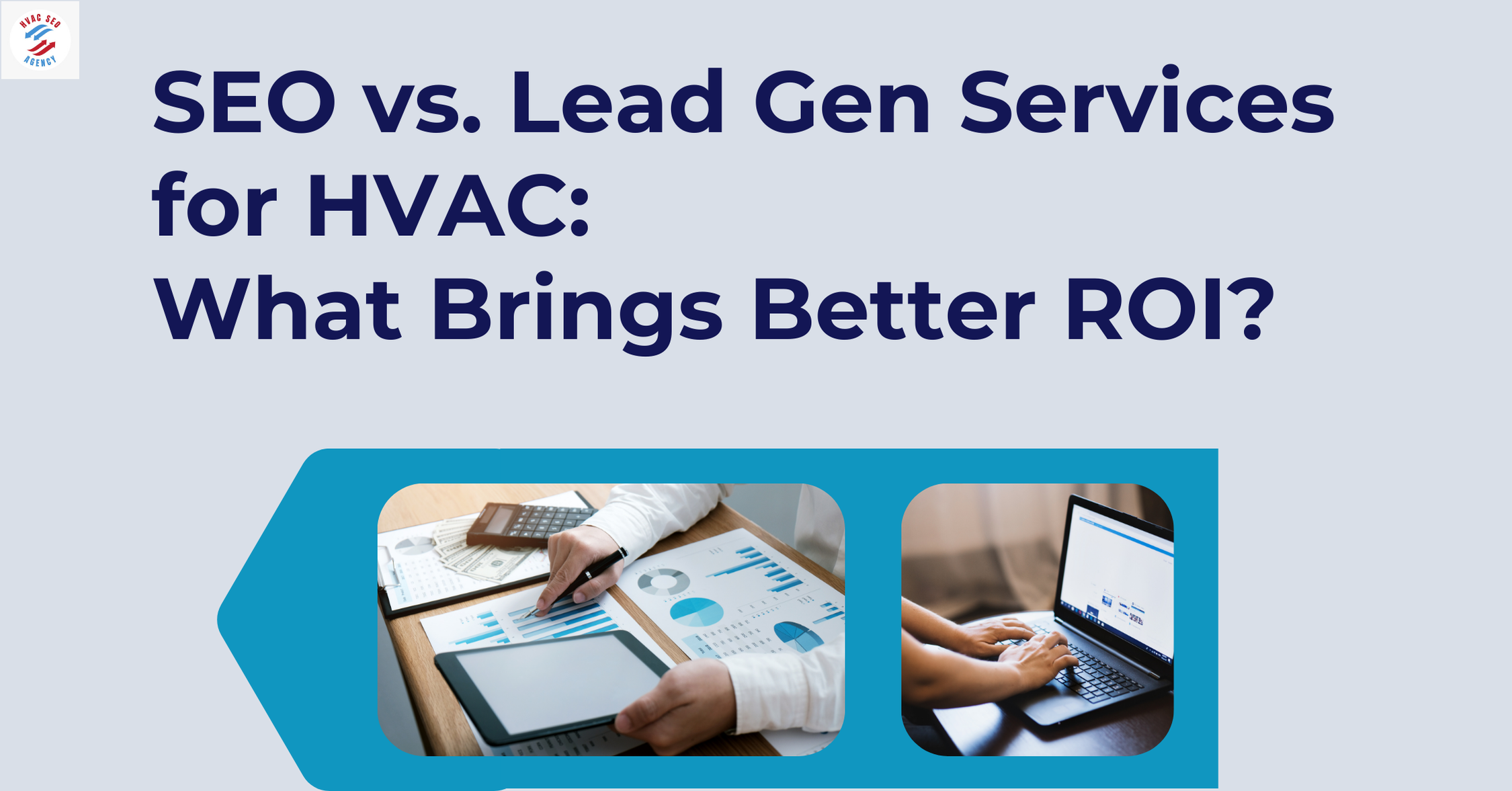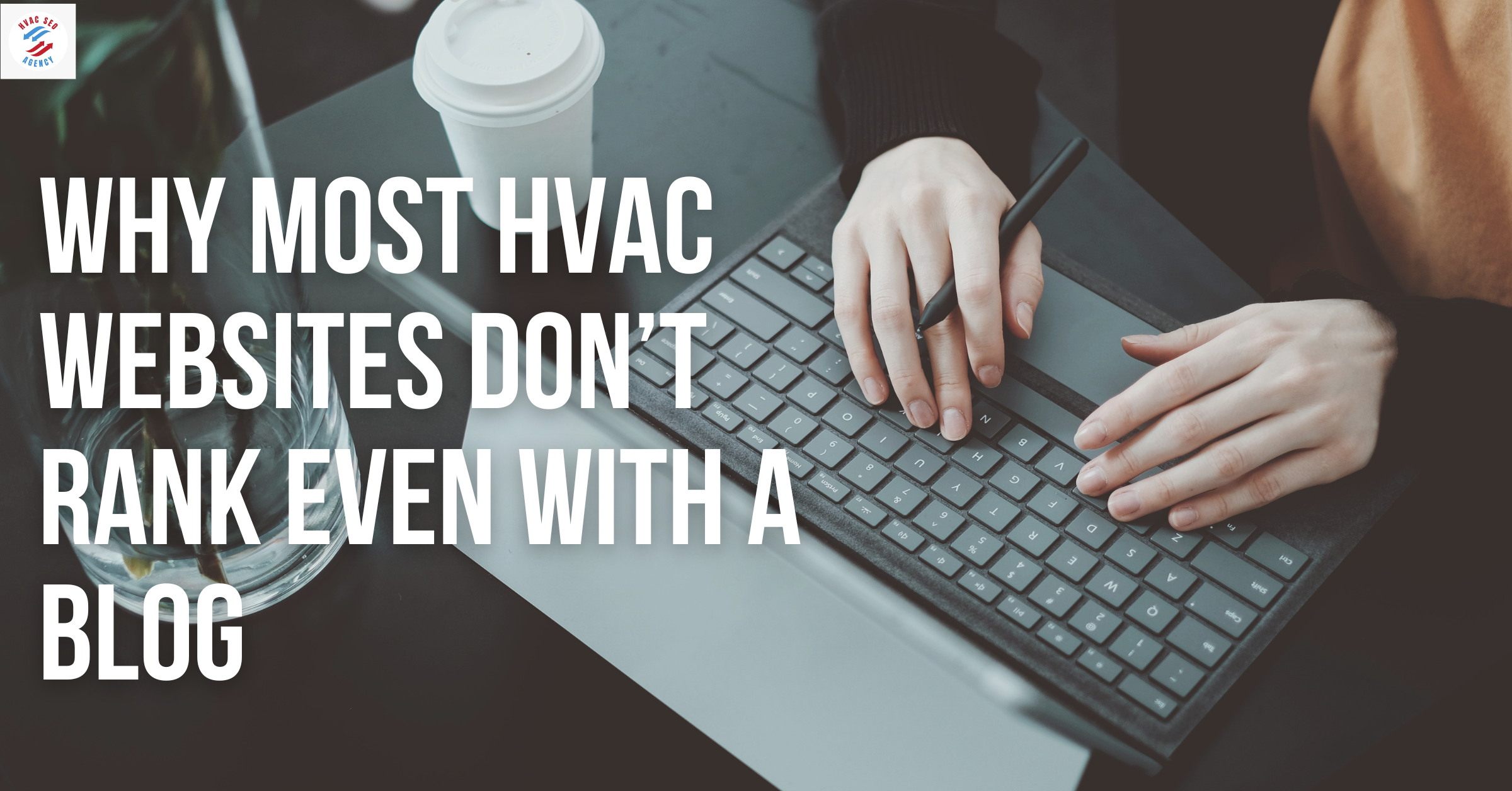Social Media Marketing for HVAC Businesses: What Works & What Doesn’t
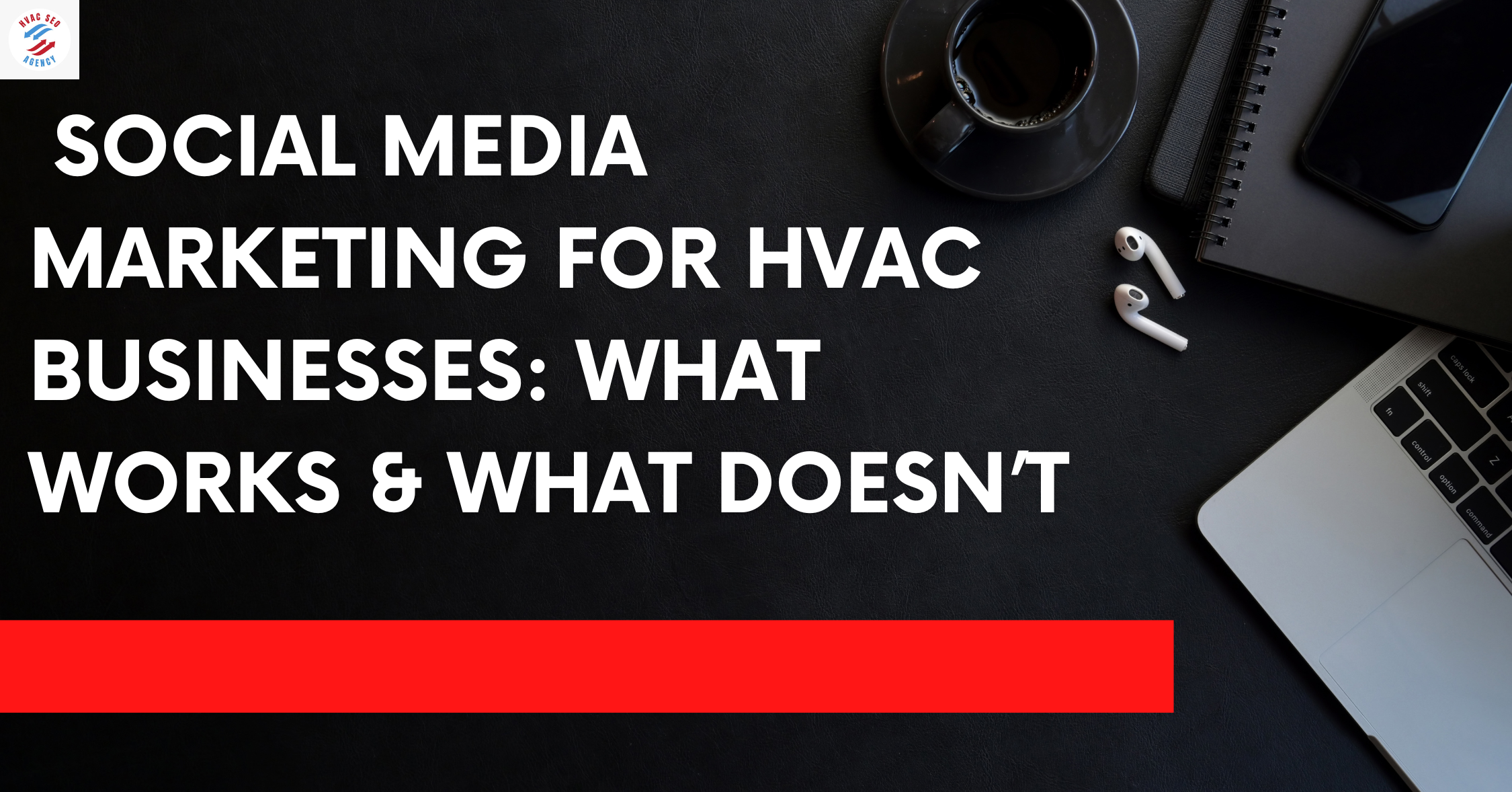
Why Social Media Matters for HVAC Businesses in the Digital Age
In today’s digital-first landscape, HVAC businesses can no longer rely solely on word-of-mouth or local listings to attract and retain customers. Social media has become a core pillar of digital marketing and when used strategically, it can drive consistent leads, build brand authority, and amplify your local reach. However, many HVAC contractors still approach social media with outdated strategies or ignore its potential altogether.
To compete in competitive markets like [City], HVAC companies must integrate their social efforts with Local SEO for HVAC Contractors and PPC for HVAC Contractors in [City] to dominate online visibility. These digital assets when aligned create a powerful loop of discovery, engagement, and conversion.
A common mistake HVAC business owners make is viewing social media in isolation. Instead, it should be treated as an ecosystem that feeds and supports your broader digital presence. For instance, a Facebook campaign promoting your seasonal AC tune-up offer should link back to a landing page optimized with Local SEO for HVAC Contractors. Similarly, well-crafted YouTube videos can be used in retargeting ads through PPC for HVAC Contractors in Miami, reinforcing trust and shortening the buyer journey.
What This Blog Will Cover
This blog will dive deep into:
The social media platforms that actually work for HVAC businesses
What to avoid to save budget and time
How to align your social media strategy with SEO and PPC
Real stats, graphs, and U.S. market insightsThe role of a specialized HVAC SEO agency in maximizing results
Facebook Marketing for HVAC Businesses: Still Worth It?
Facebook remains a top-performing platform for HVAC social media marketing, especially for targeting homeowners aged 30–60 the demographic most likely to hire HVAC services. Despite the rise of newer platforms, Facebook's hyper-local targeting, community features, and ad formats make it a powerhouse for HVAC lead generation.
What Works on Facebook:
Localized Promotions & Seasonal Offers
Posts that feature limited-time deals on AC servicing or furnace tune-ups tend to perform exceptionally well, particularly when paired with HVAC advertising online through geo-targeted Facebook Ads.Customer Testimonials in Video Format
Video content showcasing real customer feedback builds social proof and engagement. These can be boosted with a small budget for visibility among local audiences.HVAC Tip-of-the-Week Series
Simple, educational posts like “How to lower your summer cooling bill” not only build trust but also increase your organic reach.Facebook Groups Participation
Joining and contributing to local homeowner or community groups increases your visibility and referral potential.
What Doesn’t Work:
Generic Stock Photos: These fail to engage or build credibility.
Too Much Text in Ads: Facebook penalizes ads with high text density in images, reducing reach.
Inconsistent Posting: Sporadic activity makes your brand look unprofessional and inactive.
Graph: Average HVAC Lead Cost by Social Platform (2024, U.S. Data)
Facebook provides one of the lowest HVAC lead costs with high engagement, making it ideal for small-to-medium HVAC contractors.
How to Boost HVAC Results with Facebook Ads
To scale faster, consider combining HVAC social media marketing with PPC for HVAC Contractors in [City] by running Facebook Lead Ads and retargeting those who visit your service pages via Google Ads. This dual-channel approach keeps your brand top-of-mind and drives higher conversion rates.
Instagram Strategy for HVAC: Visuals That Convert
While Facebook is excellent for community engagement, Instagram is all about aesthetics and storytelling. For HVAC businesses, this platform can showcase the visual transformation of your work before-and-after installations, behind-the-scenes clips, and even IoT-enabled HVAC system dashboards.
But not every post will generate engagement or leads. Success on Instagram depends on mastering visual consistency, smart use of hashtags, and integrating educational content with local relevance.
What Works on Instagram for HVAC Marketing:
Before-and-After Reels
Posting time-lapse videos of duct cleaning, AC unit replacements, or energy-efficient upgrades draws attention and communicates competence visually.Highlighting Smart Technology
Many U.S. homeowners are curious about the Role of IoT in Modern HVAC Equipment—such as smart thermostats, energy usage dashboards, and remote diagnostics. Creating short videos that explain these tech benefits helps position your brand as modern and knowledgeable.Stories with Polls and Q&A
Engaging followers via Instagram Stories (e.g., “Did you change your air filter this month?”) can increase interaction and algorithmic reach.Branded Hashtag Campaigns
Use local and industry-specific hashtags (like #DallasHVAC, #SmartHVACHome, #EnergySavingsTips) to reach nearby audiences and increase post discoverability.
What Doesn’t Work:
Overly technical images without explanation
Poor lighting or unclear photos of equipment
Irregular posting schedules
Ignoring engagement (comments, DMs)
Table: Best Performing HVAC Instagram Post Types (Based on Engagement Rate - 2024)
Source: Later, Social Media Examiner, HVAC Instagram Insights Report 2024
How to Use Instagram for Brand Authority
HVAC companies can build trust by combining HVAC social media marketing with value-driven content that explains new-age systems. A short video discussing the Role of IoT in Modern HVAC Equipment like how a connected thermostat learns patterns or alerts on faults makes your services more appealing to tech-savvy homeowners.
You can even run Instagram ads targeting local homeowners with interests in “smart homes,” “energy efficiency,” or “HVAC technology” and retarget them through Facebook or Google using pixel data.
YouTube Marketing for HVAC: Build Trust, Rank Higher, Win More Leads
YouTube is no longer just for entertainment, it's a powerful search engine in itself. With the right content strategy, HVAC businesses can use YouTube to educate potential clients, rank on both YouTube and Google, and generate qualified leads. More importantly, long-form content builds trust, something quick Facebook posts or Instagram reels can’t do alone.
For businesses investing in HVAC social media marketing, YouTube offers unmatched long-term value when combined with Local SEO for HVAC Contractors and a solid PPC funnel.
What Works on YouTube:
How-to Guides & Troubleshooting Videos
Videos like “How to fix a noisy AC unit” or “Signs your HVAC system needs replacing” help establish authority. These videos often rank well on Google too, giving dual visibility.Explainer Videos Featuring IoT Systems
Explaining the Role of IoT in Modern HVAC Equipment through detailed, visual breakdowns (e.g., remote monitoring, smart thermostat controls) helps homeowners understand the value of upgrading.Behind-the-Scenes Installation Walkthroughs
Transparency builds credibility. Sharing real-world projects, from ductwork to full installations, adds authenticity to your brand.Customer Testimonials & Case Studies
Documenting your impact through client feedback is a proven way to convert cold viewers into warm leads.
What Doesn’t Work:
Poor Audio and Lighting: Reduces viewer retention and damages brand perception.
Unedited Raw Footage: Viewers expect a clean, to-the-point video.
No Call-to-Action: If your video ends without offering a next step (e.g., “Book a free estimate today”), you’re missing conversions.
Table: HVAC YouTube Content Types vs Average Watch Time (U.S., 2024)
Source: Wistia, HubSpot Video Benchmarks, YouTube HVAC Channel Stats (2024)
Pro Tip: SEO + Video = Authority
Embed YouTube videos into your service pages and blogs, especially those optimized with Local SEO for HVAC Contractors. It boosts session time, improves page rankings, and educates visitors simultaneously.
Additionally, you can run Best HVAC SEO Marketing Services via YouTube pre-roll ads targeting users searching for “HVAC repair near me” or “AC installation [City].” These ads are cost-effective and ideal for local branding.
TikTok & Short-Form HVAC Content: Can It Really Drive Leads?
While TikTok may seem unconventional for the HVAC industry, it has opened new doors for local service businesses to reach homeowners in unexpected and highly engaging ways. TikTok’s short-form video format gives HVAC contractors a chance to educate, entertain, and humanize their brand all within 60 seconds.
If your goal is to stand out in a crowded local market and attract younger homeowners, TikTok can be a powerful addition to your HVAC social media marketing toolkit. Even better, it can generate organic reach without the heavy ad spend required by other platforms.
What Works on TikTok:
Quick Fix Tutorials
Simple videos like “How to reset your HVAC system in under 1 minute” or “Why is your AC leaking?” are practical and widely shared.Tech Showcase: AI in HVAC
People are curious about smart home technologies. Videos that demonstrate how technicians use AI for HVAC system diagnostics—like detecting airflow inefficiencies or predictive maintenance can build authority and intrigue.Behind-the-Scenes Clips
Show your team in action—whether it's climbing into attics or setting up smart thermostats. Authenticity wins.Response Videos to Common Questions
TikTok’s reply-to-comment feature allows you to build relationships while educating.
What Doesn’t Work:
Overly technical jargon with no explanation
Sales-heavy content
Poor audio or shaky video quality
Content without captions (many watch with sound off)
Table: HVAC Content Engagement Rates on TikTok (U.S., 2024)
Source: TikTok U.S. Small Business Trends Report, 2024
Strategic Tip: Leverage AI Content for Authority
Short videos explaining how you use AI for HVAC system diagnostics—such as mobile apps showing energy consumption, system fault alerts, or AI-assisted airflow mapping—position your brand as forward-thinking and modern. Use this content across TikTok, Instagram Reels, and YouTube Shorts to amplify its impact.
Pairing these videos with a CTA like “Book a smart HVAC checkup today” can drive traffic to landing pages optimized with HVAC advertising online, boosting both brand authority and conversions.
LinkedIn for HVAC: B2B Marketing That Actually Converts
While platforms like Facebook and TikTok target homeowners, LinkedIn is a goldmine for HVAC contractors who serve commercial properties, real estate developers, facility managers, and corporate offices. It's not about vanity metrics here, it's about relationship building, authority, and high-value contracts.
For HVAC companies targeting commercial clients, leveraging HVAC social media marketing on LinkedIn can fill your pipeline with long-term, high-revenue projects. The key is to position your brand as a thought leader and problem-solver, not just another service provider.
What Works on LinkedIn:
Case Studies & Success Stories
Sharing results from commercial HVAC installations (e.g., “How we reduced energy bills by 40% for a 5-floor office in [City]”) builds instant trust.Industry Trend Posts
Write short posts about new technologies or regulations especially topics like the Role of IoT in Modern HVAC Equipment or sustainable HVAC solutions. These draw interest from decision-makers.Employee Spotlights & Certifications
Showcasing licensed professionals or team milestones builds brand credibility.LinkedIn Ads Targeting Facility Managers
You can use HVAC advertising online through LinkedIn Ads to target job titles like “Property Manager,” “Maintenance Director,” or “Building Engineer” in specific cities.
What Doesn’t Work:
Copy-pasted blog links without commentary
Sales-heavy direct messages
Lack of visual assets (photos, charts, infographics)
Graph: Top B2B Platforms for HVAC Lead Generation (U.S., 2024)
Source: HVAC Business Marketing Report, Clutch & Salesforce B2B Lead Study, 2024
Why Commercial SEO Still Matters on LinkedIn
Don’t forget: every post, article, or video on LinkedIn is indexed by Google. That means combining HVAC social media marketing with strong Local SEO for HVAC Contractors and embedding strategic keywords in your posts can extend your visibility beyond the platform itself.
For example, a LinkedIn article titled “How We Use AI for HVAC System Diagnostics to Cut Downtime in Office Buildings” can rank for high-intent commercial HVAC searches while simultaneously building brand authority.
Twitter/X for HVAC: Real-Time Visibility and Thought Leadership
Though Twitter (now rebranded as X) isn’t the first platform that comes to mind for HVAC businesses, it has unique advantages especially for companies looking to build authority, connect with local influencers, or share timely updates. X is fast-moving, community-driven, and ideal for showcasing your HVAC expertise in real time.
While it may not generate leads as directly as Facebook or Google Ads, it’s a powerful supporting tool within a broader HVAC social media marketing strategy.
What Works on X:
Live Updates During Weather Events
When extreme heat waves or cold fronts hit, local users are searching for HVAC tips, emergency services, and energy-saving advice. Tweeting in real-time during such events gets you seen when it matters most.Replying to Trending Topics
Jumping into conversations about local infrastructure, smart homes, or building codes gives you exposure among potential commercial and residential clients.Sharing Quick Tips with Hashtags
Daily HVAC tips using relevant hashtags (e.g., #HVACtips, #[City]Energy) keep your brand top of mind.Showcasing Smart HVAC Features
You can tweet short clips or images showing how you use AI for HVAC system diagnostics, energy analytics, or smart scheduling tools.
What Doesn’t Work:
Inconsistent posting or automation without engagement
Purely promotional tweets with no educational value
Ignoring replies or DMs
Table: HVAC Brand Lifespan of Social Media Posts by Platform (2024)
Source: Sprout Social, Hootsuite Benchmark Report 2024
Strategic Tip: Use X to Boost Google Rankings
Tweets are indexed by Google. By using keywords like HVAC advertising online and Local SEO for HVAC Contractors in your posts especially when linking back to your blog or service pages you can increase the visibility of your website in real-time search results.
Also, when you participate in HVAC-related Twitter chats or engage with influencers (like realtors or energy efficiency experts), you broaden your reach without a high ad budget.
Pinterest for HVAC: Long-Term Visibility Through Visual Search
While Pinterest is often associated with DIY projects, home design, and wedding planning, it holds surprising value for HVAC companies—especially those offering residential services or energy-efficient upgrades. Pinterest is a visual search engine, and pins are indexed by Google, which makes it a long-term asset in your HVAC social media marketing toolkit.
For service-based businesses, Pinterest is especially effective for building evergreen content that keeps driving traffic for months or even years after posting.
What Works on Pinterest:
Before-and-After Project Boards
Create boards that showcase home HVAC transformations, smart thermostat installations, or eco-friendly upgrades. This builds trust and clicks.Energy-Saving Infographics
Visuals explaining how much homeowners can save on electricity bills with modern HVAC systems are frequently shared.Seasonal Maintenance Checklists
Pins titled “Spring HVAC Checklist” or “Winter Home Heating Prep Guide” drive saves and repins—especially when optimized for SEO.Smart Home Content
Posts showing how homeowners can use AI for HVAC system diagnostics and automate energy use are highly engaging among the Pinterest “smart home” audience.
What Doesn’t Work:
Stock-heavy pins with no branding or value
Unlinked pins (i.e., no call to action or destination URL)
Lack of consistency in board themes or pin descriptions
Table: Referral Traffic by Platform for HVAC Content (2024)
Source: Social Media Examiner, HVAC Marketing Benchmarks 2024
Pinterest + SEO = Passive Lead Flow
Every pin you publish can include a link back to your website, blog, or service page—making Pinterest an excellent tool to drive long-term traffic. Optimize your pin titles and descriptions with terms like HVAC social media marketing, Local SEO for HVAC Contractors, or HVAC advertising online for added discoverability.
Even better, when your pins gain traction, they often appear in Google Image Search, giving your brand additional passive exposure without extra spend.
Integrating Social Media with Local SEO and PPC: The Ultimate HVAC Growth Formula
Most HVAC companies treat social media, SEO, and PPC as separate strategies—but when these elements are integrated, they generate exponential returns. A Facebook ad might grab attention. A Google search might trigger trust. And a blog or video might seal the deal. This is where HVAC social media marketing, Local SEO for HVAC Contractors, and PPC for HVAC Contractors in [City] must work together.
This integration ensures you show up everywhere your customer looks—on Instagram when they scroll, on Google when they search, and in their inbox after they click.
How It Works:
Start with Local SEO
Optimize your website and service pages for high-intent keywords like “emergency AC repair in [City]” or “HVAC installation near me.” This lays the organic foundation.Layer with Social Proof
Use social platforms like Facebook, Instagram, and YouTube to showcase reviews, completed jobs, and smart system demos. Embed keywords like Use AI for HVAC System Diagnostics to educate and attract.Amplify with PPC
Run PPC for HVAC Contractors in [City] targeting Google and Meta ads with specific calls to action—like “Book a Free HVAC Inspection.” Retarget social video viewers with PPC ads to close leads faster.Use Analytics to Close the Loop
Connect Google Analytics, Meta Pixel, and UTM tracking links to understand which social channels are feeding your SEO and PPC performance.
Graph: Combined HVAC Lead Conversion by Channel (U.S., 2024)
Source: Bright Local, Word Stream HVAC Report 2024, U.S. Contractor Marketing Insights
Strategic Tip: Let Data Drive the Funnel
Your HVAC digital marketing strategy should be an interconnected funnel. Use social media content to build awareness, Local SEO to support discovery, and PPC to close warm leads fast. When these work together, you increase conversion rates, reduce ad spend waste, and build long-term brand dominance.
For HVAC businesses in competitive markets like [City], this approach isn’t optional—it’s the new standard.
Measuring HVAC Social Media Success: Metrics That Actually Matter
Posting regularly is important but it’s not enough. HVAC businesses must measure the right metrics to know what’s working and where to optimize. Without performance tracking, you’re just guessing and guesswork leads to wasted ad budgets, low engagement, and poor ROI.
To make HVAC social media marketing truly effective, align your performance metrics with business goals: leads, bookings, revenue, and customer retention.
Top Metrics to Track for HVAC Social Media Campaigns:
Lead Conversion Rate
The most critical metric. Track how many followers, viewers, or ad clickers convert into quote requests, calls, or form submissions.Cost Per Lead (CPL)
Especially if you're running PPC for HVAC Contractors in [City], your CPL reveals how efficient your ad spend is across platforms like Facebook, YouTube, or LinkedIn.Click-Through Rate (CTR)
A high CTR means your content or ad is compelling. If it’s low, your messaging or creativity may need to change.Engagement Rate
Tracks how users interact with your content—likes, comments, shares, saves. This signals to algorithms that your content is relevant.Impressions vs. Reach
Impressions show how often your content appears; reach shows how many unique users saw it. Both matter when tracking brand visibility.Call Tracking & Form Fills
Integrate tools like CallRail or Google Tag Manager to trace which social posts or ads are leading to calls or bookings—especially when promoting services like Use AI for HVAC System Diagnostics or energy-efficient upgrades.
Graph: Most Valuable Social Media KPIs for HVAC Businesses (2024, U.S. Benchmark)
Source: Sprout Social, HubSpot, HVAC Contractor Marketing Analytics 2024
Strategic Tip: Track Per Platform, Not Just Overall
Don’t lump all social media results together. Break down your KPIs by platform (Facebook, Instagram, YouTube, etc.) and content type (reels, image posts, ads). This allows you to double down on high-performing formats and stop wasting budget on ineffective ones.
For example, if Instagram reels about “How we Use AI for HVAC System Diagnostics” are outperforming your static Facebook promos, shift budget accordingly. The data will show you where your revenue is hiding.
FAQs About HVAC Social Media Marketing
1. What is the best social media platform for HVAC businesses?
The most effective platforms are Facebook for local residential reach, YouTube for authority and SEO, and LinkedIn for commercial B2B HVAC leads. Instagram and TikTok are ideal for short-form visuals and tech showcases, while Pinterest offers long-term referral traffic.
2. How often should HVAC companies post on social media?
Consistency is more important than frequency. Aim for:
Facebook & Instagram: 3–5 posts/week
YouTube: 2–4 videos/month
LinkedIn: 2–3 posts/week
TikTok: 3–5 short videos/week
3. What’s the role of SEO in social media?
Social posts and videos can rank on Google. Optimizing your content with keywords like HVAC social media marketing, HVAC advertising online, or Local SEO for HVAC Contractors improves search visibility and drives organic traffic.
4. Can social media generate real HVAC leads?
Yes. Platforms like Facebook and YouTube consistently generate service calls, form fills, and estimate requests—especially when combined with PPC for HVAC Contractors in [City] and call tracking tools.
5. How can AI improve my HVAC social content?
Showcasing how you use AI for HVAC system diagnostics not only attracts tech-savvy homeowners but also positions your brand as modern and reliable. Create educational content about smart thermostats, predictive maintenance, and energy savings.
Conclusion: Social Media Is a Necessity—Not a Luxury—for HVAC Businesses
The HVAC industry is rapidly evolving, and so is consumer behavior. Homeowners now expect quick information, real-time responses, and transparent brands—delivered via social platforms they already use daily.
Whether you're running targeted HVAC advertising online, building community with local video content, or educating audiences about the Role of IoT in Modern HVAC Equipment, your digital presence must be strategic, consistent, and fully integrated with Local SEO for HVAC Contractors and PPC for HVAC Contractors in [City].
If done right, HVAC social media marketing doesn’t just drive likes and comments—it drives booked jobs, loyal customers, and long-term growth.


